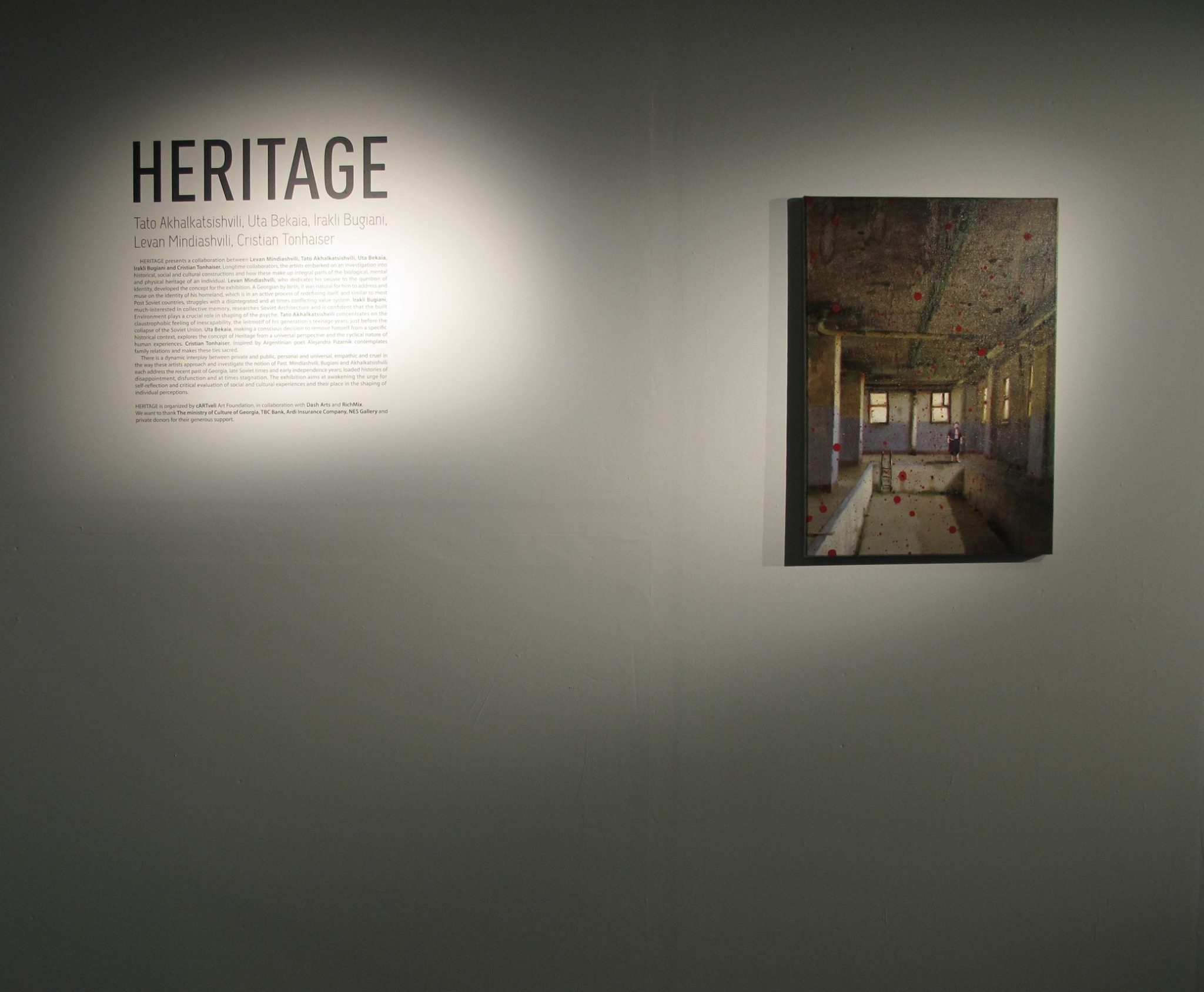Heritage 2014

Tato Akhalkatsishvili made his appearance on the Georgian art scene with almost abstract landscapes. While artists of his generation were mostly interested in experimenting with multimedia and conceptual practices Tato and his fellows created artist collective ‘Figurative Art Studio’. It was the Georgian version of “New Figuration” in the post- totalitarian country’s artistic discourse, which took place amid great difficulties. On Tato Akhalkatsishvili’s web site archive of works is divided into two parts, and over the following: 2008-2012 and 2013, but it does not mean only the chronological systematization of his art; 2013 represents artist’s new project, which unlike the previous period is enriched by mixed media practice and his technical experiments are based on a conceptual basis. Tato Akhalkatsishvili is quite deliberate considering landscape the centre of his art. Even though the enigmatically defined landscapes could be showing very photo-realistically concrete geographic points or sometimes especially dimmed image, it is remote from specific and real context and creates the pictures of imaginary interrelation with the imaginary world using the complex compound of memories, feelings and unconscious experiences. What makes the expressiveness of the landscape most effective is the treatment of texture, where the technological process appears the substantive component of the painting. In his new pieces for the project ‘Heritage’ (14.11.2013 – 24.11.2013 Georgian National Museum) he did not make a spotlight on his transcendental sensitivity as usual, but displayed a whole different version of his art. Here we find the specific stories and photo characters launched in the painting, like the personal and subjective memories occurring when going over the family album that vaguely refreshes the old feelings. Since ‘Heritage’ presented the variety of comprehending the recent past Tato Akhalkatsishvili’s participation enriched the project with the subjective associations of the painful emotional experience of the history. The series of 2013 are marked by his growing interests in finding contexts and in wider explorations from his very own artistic focus. The specific yet anonymous facts related to the photos and developing into matters like loneliness, mystery, calling, exit, childhood, etc. They tell the stories of physiological states and show the moments of traumatic childhood and solidarity to yet unconscious defining moments with particular sensitivity, while the surrounding world flows through a sequence of undefined images and understanding it demands the time back.
Khatuna Khabuliani, Art Critic, 2014
